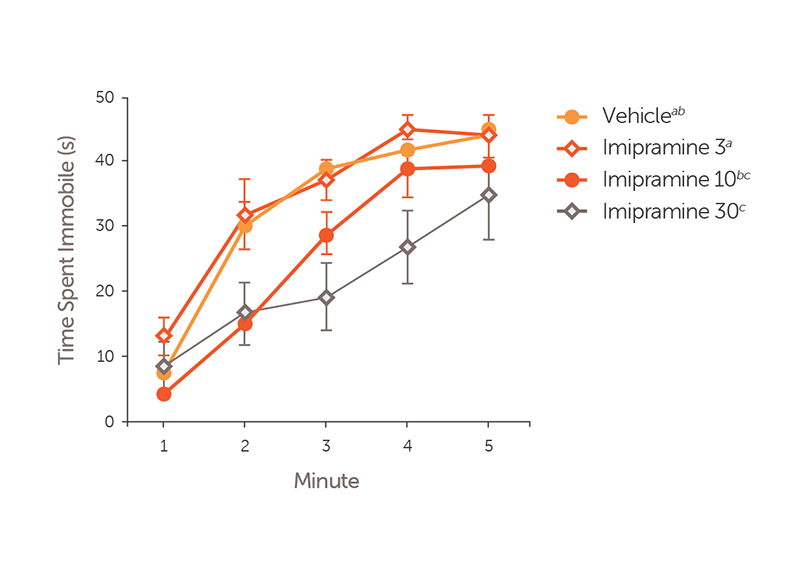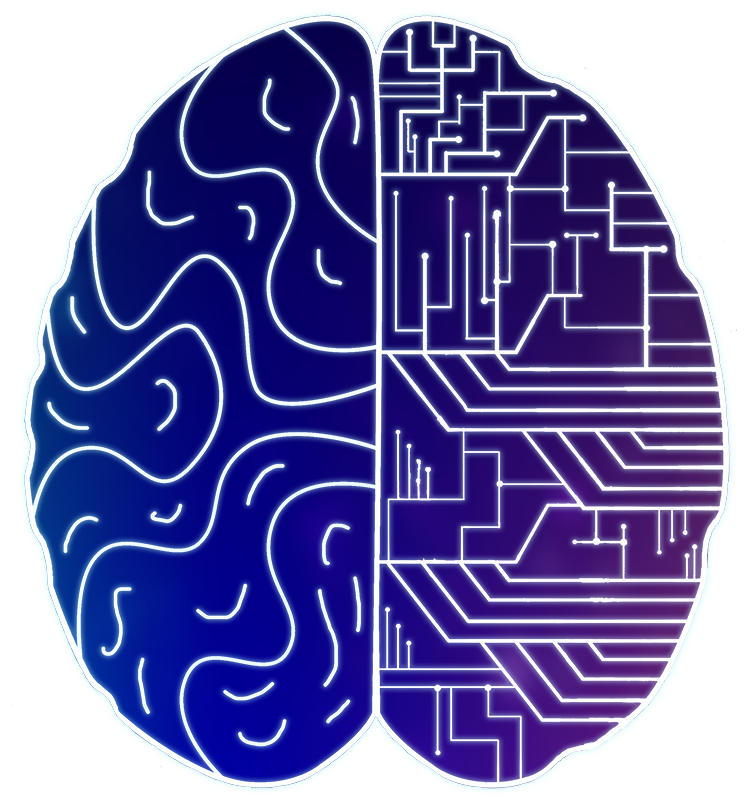Psychiatric Disorders
Validated Models for Anxiety, Depression, and Autism

Drug discovery for psychiatric disorders, such as depression, anxiety, and autism, is critical as they affect millions of individuals worldwide. Many of the treatments that are currently available are based on decades-old medications, and may be inadequate, ineffective, or accompanied by undesirable side effects. Progress to develop new psychiatric treatments has been slow, largely due to the limited understanding of the etiology or pathophysiology of many psychiatric disorders. Leverage our rigorously validated models and experienced scientists for comprehensive preclinical testing, ensuring a robust and successful drug discovery program.
Animal Models for Psychiatric Disorders
Animal models can aid in the development of new treatments for psychiatric disorders by providing valuable insights into the underlying neurobiology, allowing researchers to test potential therapies and assess their efficacy before clinical trials in humans.
Anxiety/Depression Models
Anxiety and depression are common psychiatric disorders impacting mental health and quality of life. Anxiety involves excessive worry and physical symptoms, while depression includes persistent sadness and loss of interest. Drug development is crucial as current treatments often provide inadequate relief or cause significant side effects. Advancing pharmaceuticals can lead to more effective, targeted therapies, improving patient outcomes and overall mental health care.
Anxiety/Depression Induction
We employ a variety of techniques to induce anxiety- and depression-related behaviors in rats and mice. These may include:
- Single housing
- Acute stress exposures
- Chronic stress exposures
Anxiety Assessment
Anxiety-like behaviors in rodents should be assessed through a progressive test battery with each successive test being more stressful than the last. Not all of the following tests need to be used in a given battery, but they should always move from least stressful to more stressful.
- Nestlet shredding/nest building
- Marble burying
- Light/dark box
- 3-chamber social interaction test
- Open field arena
- Elevated plus maze
Anxiety Model Validation Data

The elevated plus maze was used to assess the effects of diazepam on anxiety-like behavior in female (A) and male (B) Sprague-Dawley rats. Animals treated with diazepam (2 mg/kg IP; orange bars) 30 minutes before testing spent more time in the open arms of the elevated plus maze compared to vehicle treated animals (red bars). *p<0.05.
Depression Assessment
Depression can be measured in in vivo models by using several behavioral assays.
- Open field arena
- Elevated plus maze
- Swim test
Depression Model Validation Data

The swim test was used to assess the effects of imipramine on depressive-like behaviors in male C56BL/6J mice. Mice were administered vehicle or imipramine (3, 10, or 30 mg/kg IP) 60 minutes before testing. Animals treated with the highest dose of imipramine (grey line) show decreased immobility in the swim test compared to vehicle treated animals (orange line), validating the anti-depressant effect of imipramine in this assay. Data sets that do not share any letters differed significantly. F(3,12)=11.52, p<0.001
Autism Models
Autism spectrum disorders (ASD), are neurodevelopmental disorders characterized by difficulties in social interaction, communication challenges, and repetitive behaviors. While mild forms can lead to unique strengths and talents, severe cases may significantly impair daily functioning and quality of life. ASD affects millions worldwide and often coexists with other conditions like ADHD or intellectual disabilities.
Fragile X Syndrome Mouse Model
The Fragile X syndrome (FXS) mouse model contains a deletion of the Fragile X mental retardation 1 (Fmr1) gene. The deletion of this gene results in behavioral phenotypes similar to those seen in human FXS patients, such as hyperactivity, elevated anxiety, and reduced learning, memory and sociability.
Behavioral Assessment of FXS Mouse Model
The clinical presentation of ASD is variable and includes a wide range of behaviors. We employ a variety of techniques to assess the behavior of the FXS mouse model or your ASD model of choice. These assays include:
- Contextual/cued fear conditioning
- Elevated plus maze
- Light/dark box test
- Marble burying
- Morris water maze
- Nestlet shredding/nest building
- Open field assay
FXS Mouse Model Validation Data

Fmr1 KO mice were tested for associative fear memory with a contextual/cued fear memory behavioral assay. Compared to wild type mice (red line), knockout mice (orange line) showed reduced freezing during the testing phase to both the context and conditioned stimulus that was paired with an aversive stimulus.
Genetically Engineered Models of ASD
Both inherited genetic variations and de novo mutations contribute significantly to the genetic component of ASD. Our predeveloped transgenic rat models express genetic mutations associated with ASD and provide researchers preclinical tools for investigating the etiology of ASD and test therapeutic interventions.
Not seeing the model you need? Contact us to discuss developing a new in vivo model for your preclinical research program.
Histopathological Assessment
Histopathological analysis of rodent brains from psychiatric models provides valuable insights into the structural changes associated with various disorders. Such analyses aid in the identification of potential drug targets and in assessing the efficacy and safety of novel therapeutics, paving the way for the development of more effective treatments for psychiatric disorders. Our expertise includes the identification of:
- Neuronal markers
- Apoptotic cell death
- Neurotransmitter receptors
- Glial markers
- Activated signaling molecules
We can also provide customized histology services to meet your requirements.
Additional Endpoints
Our capabilities extend beyond models and behavioral testing. We have a broad range of GLP and non-GLP in vivo and in vitro assays that can be customized to provide solutions for your drug discovery program.
- Stereotaxic surgery
- Tissue harvesting
- Oxidative stress enzymology
- Cytokine/chemokine analysis via Luminex®
- CBC/clinical chemistry analysis
- Mass spectrometry proteomics
- Primary neural cell culturing
- Human stem cell and brain organoid culturing
- Confocal and electron microscopy




